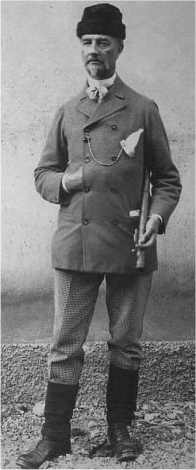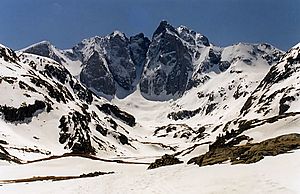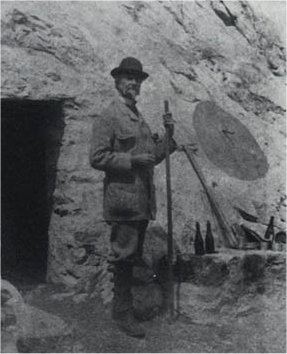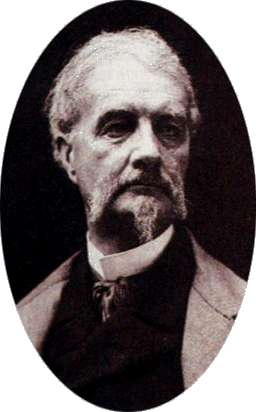Henry Russell (explorer) facts for kids
Henry Russell (1834–1909) was a famous explorer of the Pyrenees mountains. He was known for his great love for the Vignemale mountain. Henry Russell was one of the first people to explore many parts of these mountains. He spent a lot of his life climbing and discovering new paths in the Pyrenees.
Contents
Henry Russell's Early Life and Travels
Henry Russell was born in Toulouse, France. His father, Thomas John Russell, came from Ireland. He moved to France because of difficult times for Catholics in Ireland. Henry went to school in Ireland at Clongowes Wood College.
When he was 23, Henry Russell began his amazing travels. In 1857, he explored North America. The next year, he climbed several mountains in the Pyrenees. These included Pic de Néouvielle and Ardiden. He also climbed Monte Perdido three times.
In 1859, he started a three-year journey around the world. He visited many faraway places. These included Saint Petersburg and Moscow in Russia. He traveled across the Gobi Desert twice. He also sailed down the Amur River. Henry Russell visited Shanghai and Hong Kong. He then went to Australia and New Zealand. He spent a year exploring India. Finally, he returned to France through Cairo and Istanbul.
Exploring the Pyrenees Mountains
From 1861, Henry Russell focused on exploring the Pyrenees. He often climbed alone or with his trusted guides. He made many "first ascents." This means he was the first person to reach the top of certain mountains. He used his own money to fund his adventures.
Russell's Love for the Vignemale
Henry Russell was especially famous for climbing the Vignemale. He first climbed it on September 14, 1861. His guide, Laurent Passet, was with him.
In 1864, Russell helped start a group called the Société Ramond. This group studied the Pyrenees mountains. It was named after a famous explorer, Louis Ramond de Carbonnières. This society still exists today.
Henry Russell climbed the Vignemale many times. His third climb was in winter, on February 11, 1869. This was the first time anyone had climbed it in winter. He was with guides Hippolyte and Henri Passet.
Building Caves on the Mountain
Henry Russell loved spending nights on the Vignemale. He first slept on a mountain top in 1880. His guides buried him in rocks and earth to keep him warm! After this, he decided to build caves on the mountain. He thought caves would look better than buildings.
Between 1881 and 1893, seven caves were built. The first cave was finished in August 1882. It was called the villa Russell. This cave was very high up, at 3,205 meters. Russell stayed there for three days. In 1884, a priest even blessed the cave and the mountain.
Later, more caves were dug. The second was called the Guides cave. The third was the Grotte des Dames (the Ladies cave). In 1888, Russell asked to "rent" a large part of the Vignemale mountain. He paid only one French franc per year for 99 years!
When the Ossoue glacier covered some of his caves, he had three new ones dug. These were lower down, at 2,400 meters. They were called the Bellevue caves. Here, he held amazing parties. He invited important people and used Persian carpets. He even called himself the Count of the Mountains.
For his last cave, Le Paradis (Paradise), he used dynamite. This created a special spot 18 meters below the Vignemale summit. Here, he celebrated his "silver wedding" to the mountain. This marked 60 years since his first climb. His last climb of the Vignemale was on August 8, 1904. He had climbed it 33 times!
A mountain peak, Pic Russell, is named after him. He was the first to climb it in 1865. Henry Russell passed away in Biarritz in 1909. He was buried in Pau.
Henry Russell's First Ascents

A "first ascent" means being the first person to successfully climb to the top of a mountain. Henry Russell made many first ascents in the Pyrenees. Here are some of them:
- Pic d'Ardiden, 2988 m, 1858
- Lustou, 3023 m, 1864
- Pic Carlit, 2921 m, 1864
- Pic des Gourgs Blancs, 3129 m, with J. Haurillon, 1864
- Pico de Coronas, 3293 m, with a porter, 1864
- Cilindro de Marboré, 3,328 m, with Hippolyte Passet, 1864
- Pic Russell, 3205 m, with C. Packe, 1865
- Marboré, 3248 m, with Hippolyte Passet, 24 September 1865
- Pena del Infierno Ctl., 3082 m, with Sarettes, 20 June 1867
- Pico Royo, 3121 m, with Haurillon, 1868
- Pic d'Albe, 3107 m, with Haurillon, July 1868
- Grande Fache 3005 m, with Latour, August 1874
- Gabiétous Or., 3031 m, with C. Passet, September 1874
- Garmo Negro, 3051 m, with Sarettes, Pablo Belio, 23 June 1876
- Pic Occ. de la Cascade, 3095 m, with C. Passet 1877
- 2e Pic Occ. de la Maladeta, 3220 m, with C. Passet, 25 August 1877
- Eriste S, 3045 m, 17 July 1878
- Grand Eriste, 3053 m, with F. Barrau, 17 July 1878
- Robiñera, 3003 m, with C. Passet, 13 August 1878
- Punta del Sabre, 3136 m, with C. Passet, Vincent Grassy, 10 September 1878
- Petit Astazou 3012 m, with C. Passet, 21 July 1879
- Punta de Lliterola, 3132 m, with C. Passet, 30 July 1879
- Grand Quayrat, 3060 m, with Henri Reboul Peytier, Hossard C. Passet, 1 August 1879
- Tuca de Mulleres, 3010 m, with F. Barrau, B. Courrèges, 5 August 1879
- Pic d'Aragüells, 3037 m, with F. Barrau, 10 August 1880
- Pico del Medio, 3346 m, with Firmin Barrau, Célestin Passet, 12 July 1881
- Pic Occ. de Clarabide, 3020 m, 6 July 1882
- Pic Or. de Clarabide, 3012 m, with F. Barrau, C. Passet, 6 July 1882
- Diente de Alba, 3136 m, with Barthélémy Courrèges, 31 August 1882
- Grand Pic de Tapou, 3150 m, with Haurine, Pierre Pujo, 1 August 1883
- Pic du Milieu de Tapou, 3130 m, with Haurine, Pierre Pujo, 1 August 1883
- Pic des Pavots, 3121 m, with Pierre Barrau (fils), André Subra, 22 June 1885





